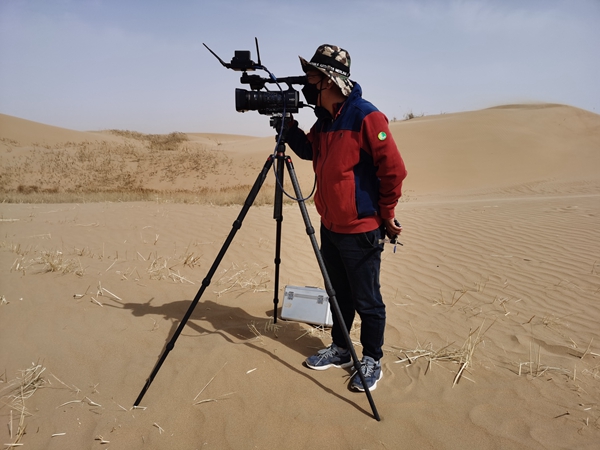

Zhu recalls two sandstorms in particular, one when he was a primary school student and the other when he had just graduated from college. Both caused an electricity blackout. Thick sand blanketed Zhu's house and the streets. Domestic animals, unless they were kept indoors, were swept away.
"As a child, I wondered if the strong winds and sandstorms would ever disappear. I always wanted to do something for my hometown," says Zhu.
Zhu usually drives hours across the desert areas of Inner Mongolia with his team members to do research, plant saxaul trees and check those planted previously. They would usually stay in the desert for several days. Their skin, red in patches, bears testimony to the conditions they endure.
"It usually takes four or five years for a saxaul tree to become fully grown. When the tree is around the same height as me, I feel rewarded and excited. It's a great pleasure to me," says Zhu.
In 2014, the SEE launched a project titled "one million saxaul trees", aiming to plant that number from 2014 to 2023, turning the desert of more than 133,330 hectares back into a thriving ecosystem. By the end of 2018, half of the organization's goal had been achieved.